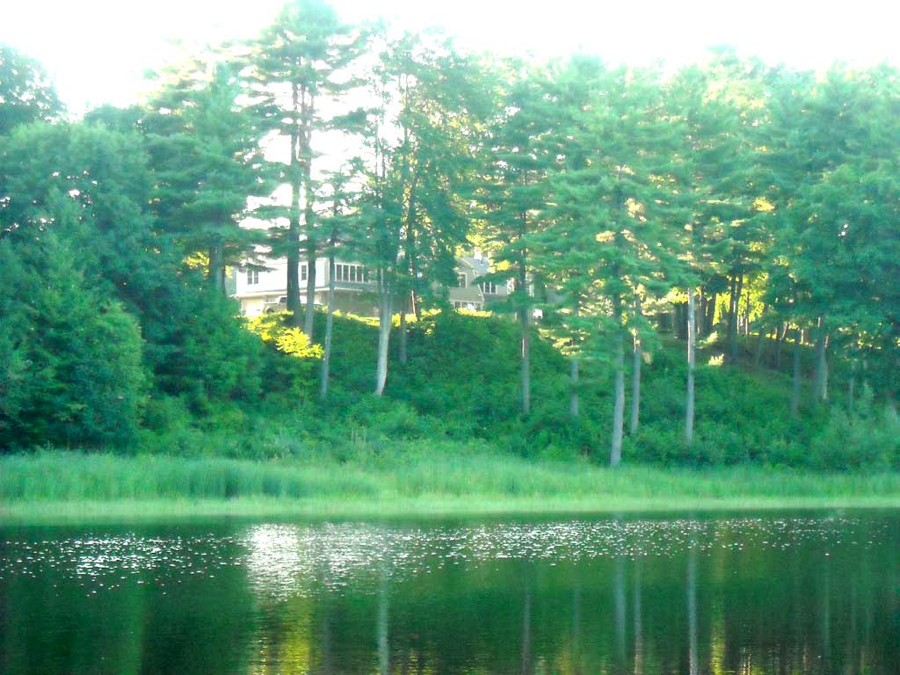What Landowners Can Do
Find information about where pollution originates and choose from various ways of addressing water quality problems.
Does water flow from you to a mudflat?
When rain falls and snow melts, some water absorbs into the ground and some water flows off surfaces and over the ground. Gravity takes water to streams, rivers and to the ocean. A watershed is the area from which water flows, to a certain location such as a river or mudflat. Locate your property to learn if it is within the watershed of a closed mudflat.
Enhance Vegetative Buffers along Shorelines that Protect Water Quality
Vegetation and soils are very effective at trapping and removing pollution from run-off before it reaches streams, rivers and harbors.  The better the barrier between any source of coliform bacteria and the shellfish growing area, the safer the shellfish.
The better the barrier between any source of coliform bacteria and the shellfish growing area, the safer the shellfish.
Thick vegetation or buffer strips along waterways slow runoff and filter nonpoint source pollutants, including:
- sediment
- nutrients
- pathogens, and
- metals.
Trees, shrubs, and ground cover will absorb up to 14 times more rainwater than a grass lawn. Unlike lawns, this vegetation does not require the time-consuming application of costly fertilizer.
A shoreline with a lawn or significant clearing allows far more pollutants to reach surface waters and lead to clam flat closures.
This is the foundation for shoreland zone regulations that require setbacks and limitations on clearing of vegetation. 
A shoreline with trees and a thick cover of shrub vegetation can provide a view to the water for the homeowner AND protect water quality.
Vegetative buffers also provide landowners with: .jpg)
- Sense of privacy
- Bird and wildlife entertainment
- Natural, and cheap, erosion control
Information and funding is available to landowners.
Landowner Toolbox
- Explore and engage in all things shellfish
- Maintain septic systems
- Maintain or remove overboard discharges
- Implement agricultural best management practices
- Consider the benefits of Decentralized Wastewater Systems
- Volunteer for shellfish management
 Menu
Menu